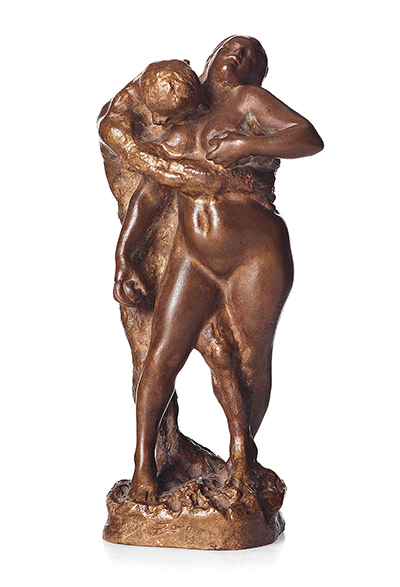When reviewing Zorn's three main mediums - painting, etching and sculpture, the last of those was certainly his least documented interest. He most likely would have first been introduced to it whilst studying at the Royal Swedish Academy of Arts in Stockholm.
As a young man, Zorn was a passionate sculptor, working exclusively in wood. This was very much in line with Swedish traditions, with the nation still very much in touch with his stunning landscape and outdoor lifestyle. He was known to have started sculpting by the age of seven and at twelve was producing impressive wooden sculptures of various animals that were living in his vicinity at the time. He liked to then paint them using natural colours found locally, such as juices and dyes from fruit and flowers that he collected himself. That was perhaps even the start of his understanding of painting too. As far as we are aware, the only materials that he used within his life were wood, stone and bronze, each of which had moments of dominance during his lifetime.
Much of what information remains on Zorn's sculptures is dispersed across multiple written publications and online, with much of it also never having been translated into English. It we start to piece bits together, some conclusions can be drawn fairly confidently. Firstly, most of what remains today was figurative sculpture. It has also been produced exclusively in bronze. Without evidence to the contrary, we have to conclude, albeit tentatively, that these were his preferred genre and material. Many academics will have looked at the qualities of his paintings and etchings in order to understand how much the artist knew about surface, light and colour with regards portraiture - the answer was rather a lot.
Zorn would have taken this knowledge and then seen sculpture as an opportunity to bring his creations into a third dimension - the new possibilities would have excited him immensely. A number of his sculptures were also produced whilst travelling around the world, some in Paris and others in the US. By this stage he would have felt particularly confident within his career generally and perhaps was looking for a new outlet with which to challenge himself. We know from his time in the US that he would complete a number of study drawings prior to commencing his work in bronze. Some sculptures have also been uncovered that were produced from wood, though these were rarer. It was around 1894 that the artist started to work more productively within this medium and he was living in Paris at that time.
Around this time Zorn produced Nympth and Faun and also started to collaborate with an American sculptor, Paul Wayland Bartlett, who helped out with the casting. Zorn accepted that he lacked experience in this art form, and as confident as he was about most things in his life, he was willing to seek help from others who he viewed as more specialists within this field. There are certain elements to sculpture that also require a major investment and so those who have joined from other mediums will normally prefer to collaborate at first, before deciding whether to commit to some of these tools. This is particularly the case with materials such as bronze or marble, less so with wooden sculpture. Invariably, artists mix together in social circles and will be able to advise each other on how to proceed with all manner of technical issues such as entering a new sphere of work.
It was around the late 19th century that the artist was being featured within a number of high profile exhibitions, where both his paintings and etchings were selling particularly well. This financial security allowed him to bring his ideas into a third dimension, and without any pressure of having to sell these pieces commercially. By 1906 the artist had a large retrospective of his career up to that point in four large gallery rooms at the Durand-Ruel's in France. Crucially, several of his sculptures were included within that display of his work, suggesting that both the artist and also the public had started to see this venture as worthy of note within the umbrella of his overall output. This was the pinnacle for the artist within France and he is also known to have been a close friend of Auguste Rodin, who himself was one of the finest sculptors in history.




